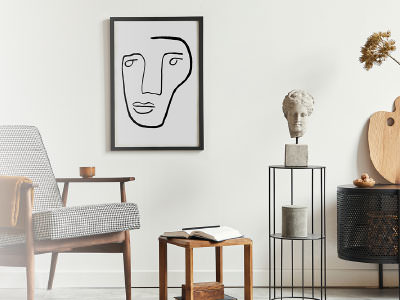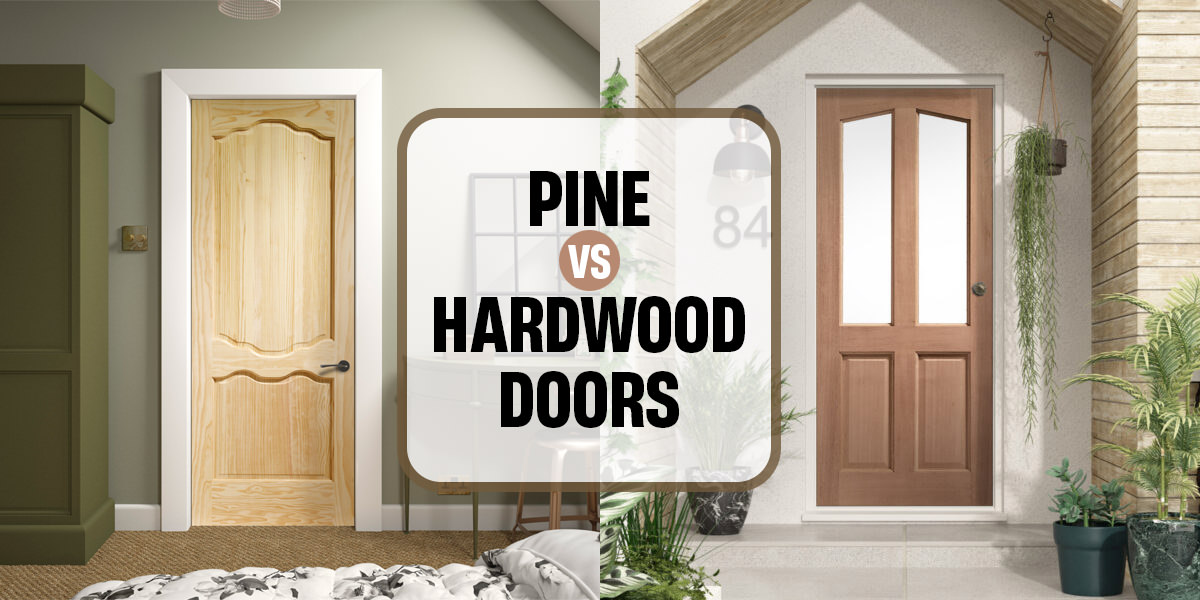
Introduction: Why Pine and Hardwood Doors Are Popular
Due to their balance of style, durability, and practicality, pine and hardwood doors have been favourites for decades.
This guide will take you through the key differences between pine and hardwood, and give you a clear idea of the pros, cons, and best applications of each type, so you can make the right choice for your home or office space.
Understanding Pine and Hardwood Doors
What Are Pine and Hardwood Doors?
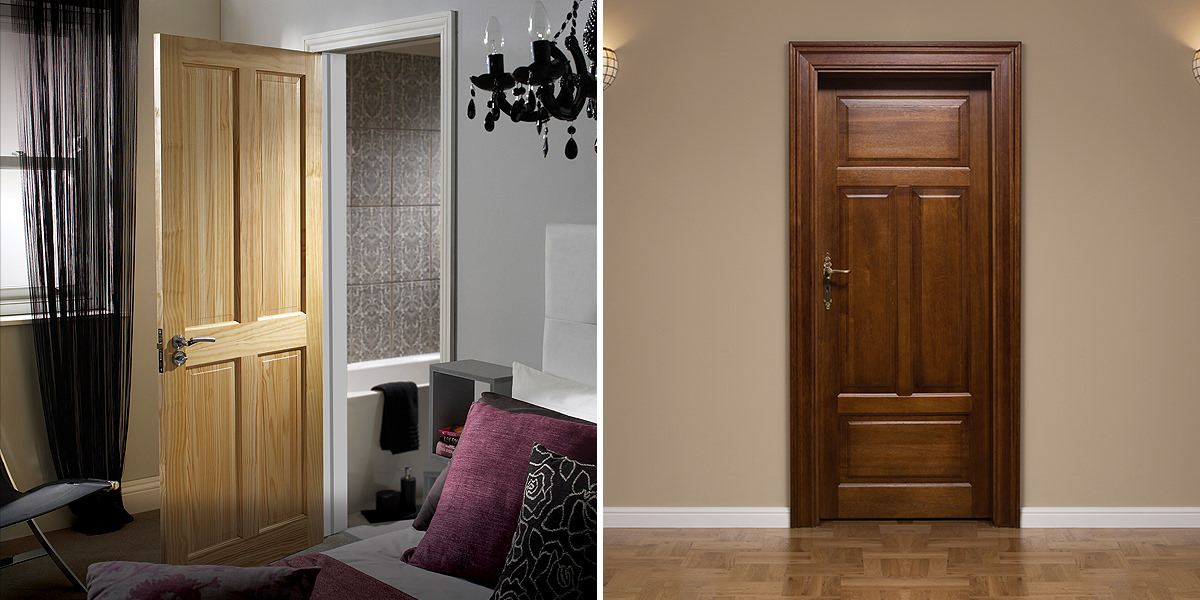
Pine doors are made from softwood pine, a budget-friendly option often chosen for internal use. Their pale grain offers a clean, natural look that can easily be painted, stained, or varnished to suit any home decor. Homeowners love pine for its affordability and adaptability, especially when upgrading bedrooms, living spaces, or home offices on a budget.
Hardwood doors are crafted from denser woods like oak, walnut, or mahogany. Known for their superior strength, hardwood doors resist wear and warping, making them a reliable option for both internal and external applications. Their rich tones and distinctive wood grain add a timeless, elegant touch to homes and offices.
Common Materials for Pine and Hardwood Doors
Pine doors typically use varieties like redwood or white pine. Both types are lightweight and easy to work with, which makes pine doors ideal for customisation. Whether you prefer a painted finish or a varnished look, pine can be tailored to your space without breaking the bank.
Hardwood doors, on the other hand, use dense, premium materials like oak, ash, and mahogany. These woods are naturally stronger and more resistant to warping or moisture damage. Their durability makes them an excellent choice for external entrances or busy internal areas where long-term performance is key.
Types of Pine and Hardwood Doors
Pine vs Hardwood Doors
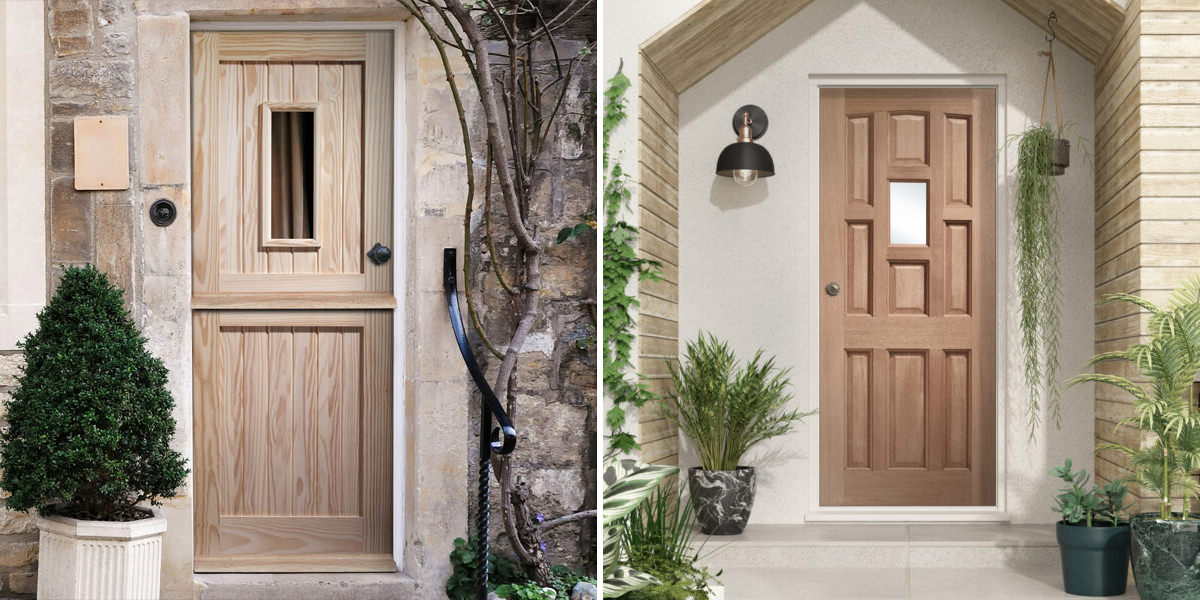
When comparing pine to hardwood, cost, durability, and design are the main factors to consider are.
Pine doors are lighter and more affordable, making them ideal for internal spaces like bedrooms and studies. They're easy to install and customisable, allowing you to paint or finish them to suit your style.
Hardwood doors are the stronger, sturdier option. They are often used in external spaces or areas with heavy foot traffic because of their resistance to wear and tear.
Though hardwood doors are more expensive, their durability and timeless appeal make them a worthwhile investment for spaces that need something long-lasting.
Internal Pine Doors
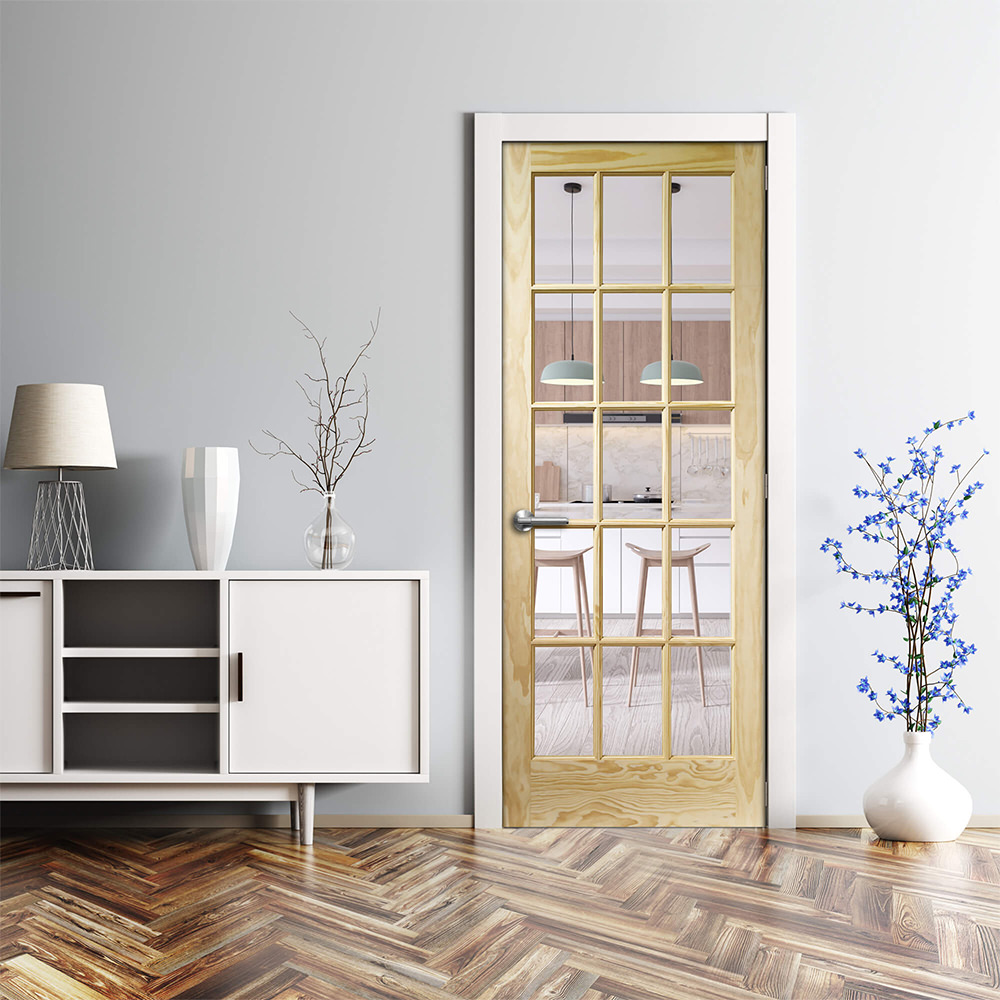
Internal pine doors are perfect for spaces that don't see as much wear and tear. Bedrooms, bathrooms, and living rooms are popular spots for pine doors because they're lightweight, easy to install, and cost-effective. Plus, their natural grain provides a warm, inviting look that suits everything from modern to traditional interiors.
For added functionality and design, many internal pine doors include glazing options. Frosted or clear glass panels allow light to filter through rooms while maintaining privacy, making them ideal for living areas or studies.
External Pine Doors
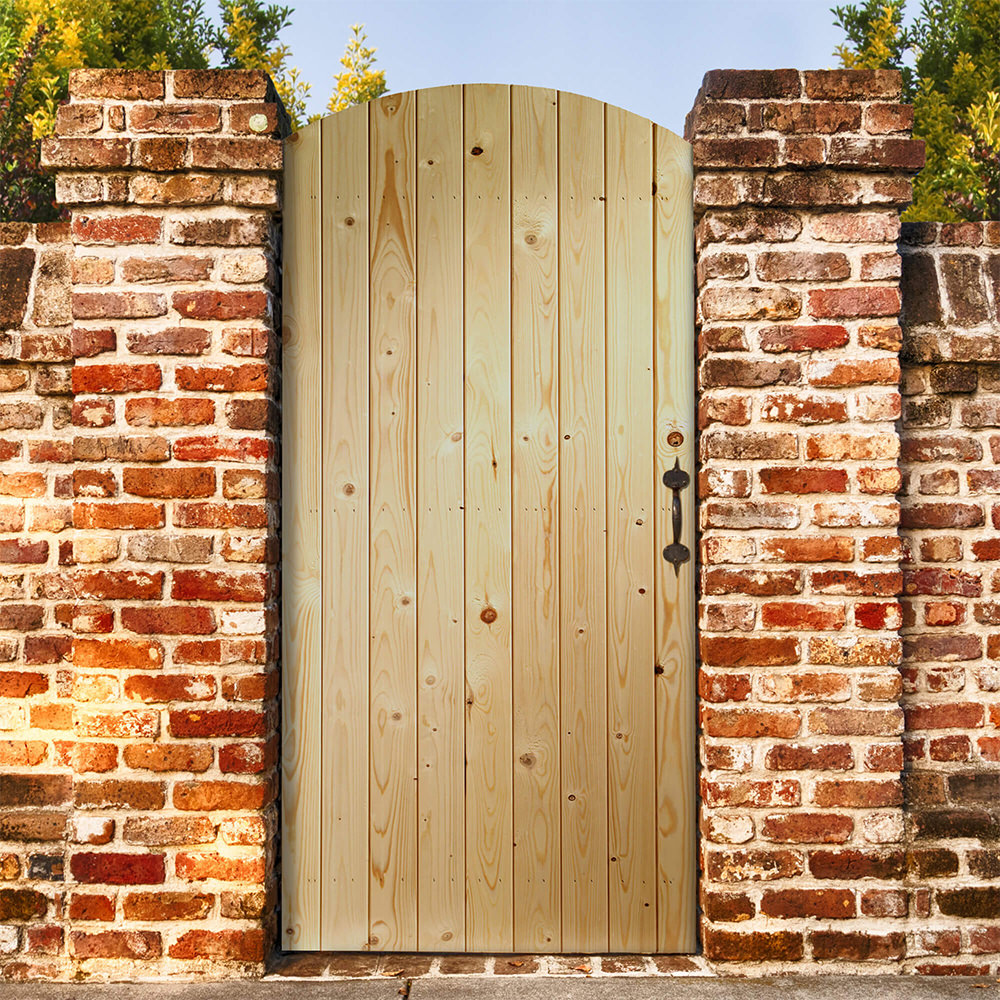
External pine doors can be a cost-effective option for homeowners seeking a natural look at their entrances.
With proper sealing, varnishing, or painting, pine doors can withstand external exposure and bring a rustic charm to front or back doors. Pine is also widely used for gates, offering a cohesive look to outdoor spaces when matched with pine entrance doors.
However, because pine is a softwood, it requires consistent maintenance to protect it from moisture, warping, and weather damage.
Internal Hardwood Doors
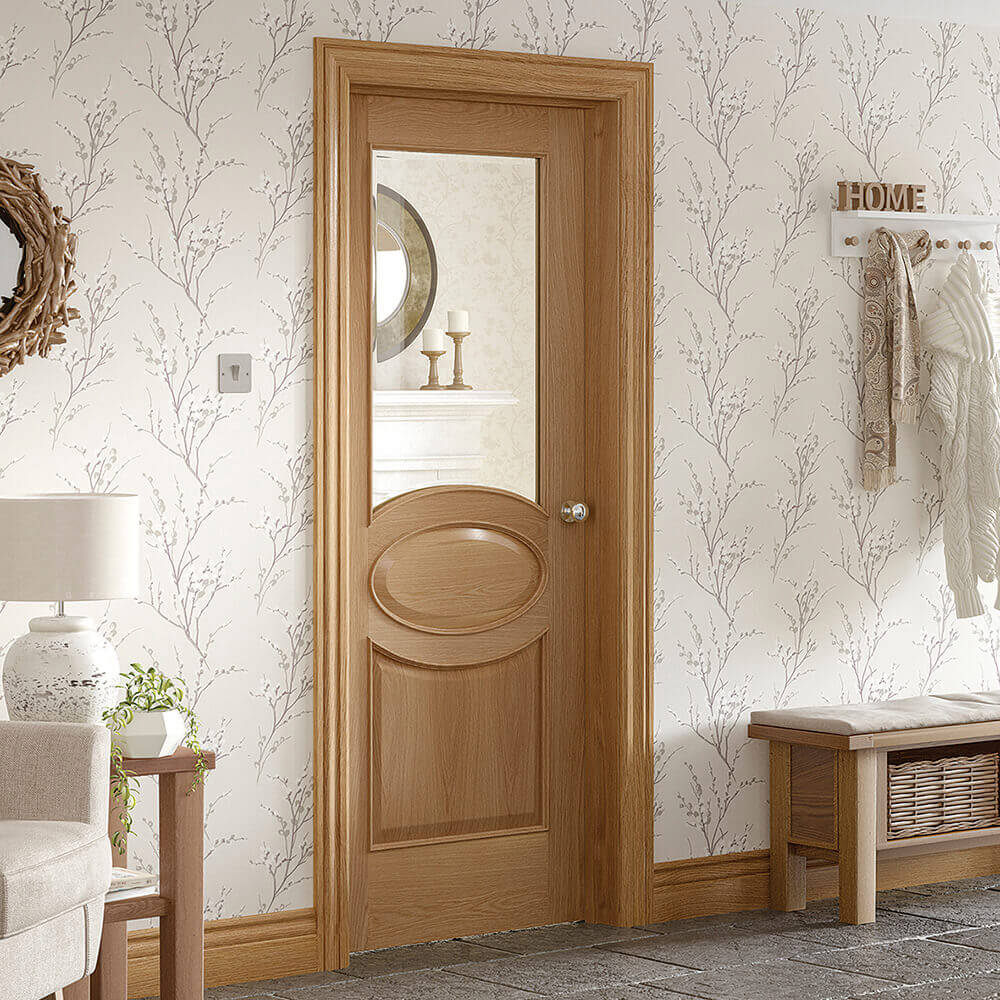
Hardwood doors are a step up in style and strength, making them ideal for internal areas with more activity.
Their durability ensures they stand up to daily wear, while their rich tones and smooth grain create a sophisticated, high-end look. Hallways, family living rooms, and boardrooms are perfect for hardwood doors.
For a modern twist, many internal hardwood doors now include glazing options. Frosted, clear, or decorative glass panels add elegance and allow light to pass through rooms while maintaining a sense of privacy.
External Hardwood Doors
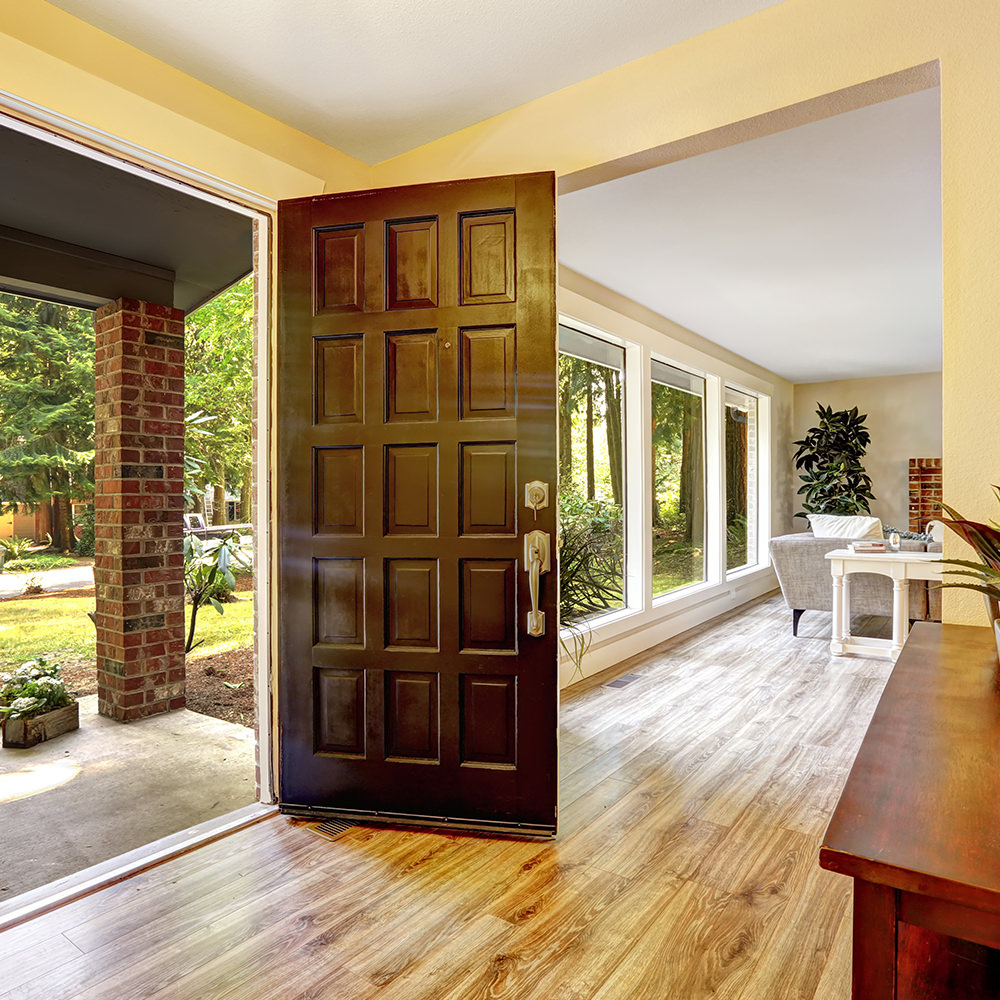
For front or back entrances, hardwood doors are second to none. Their durability and weather resistance make them an excellent long-term investment.
Rain, sun, and temperature changes have little effect on hardwood's structure, and with minimal maintenance, these doors can last for decades.
Their solid build also provides great insulation, helping keep your home warm in winter and cool in summer.
Classic Pine and Hardwood Door Styles
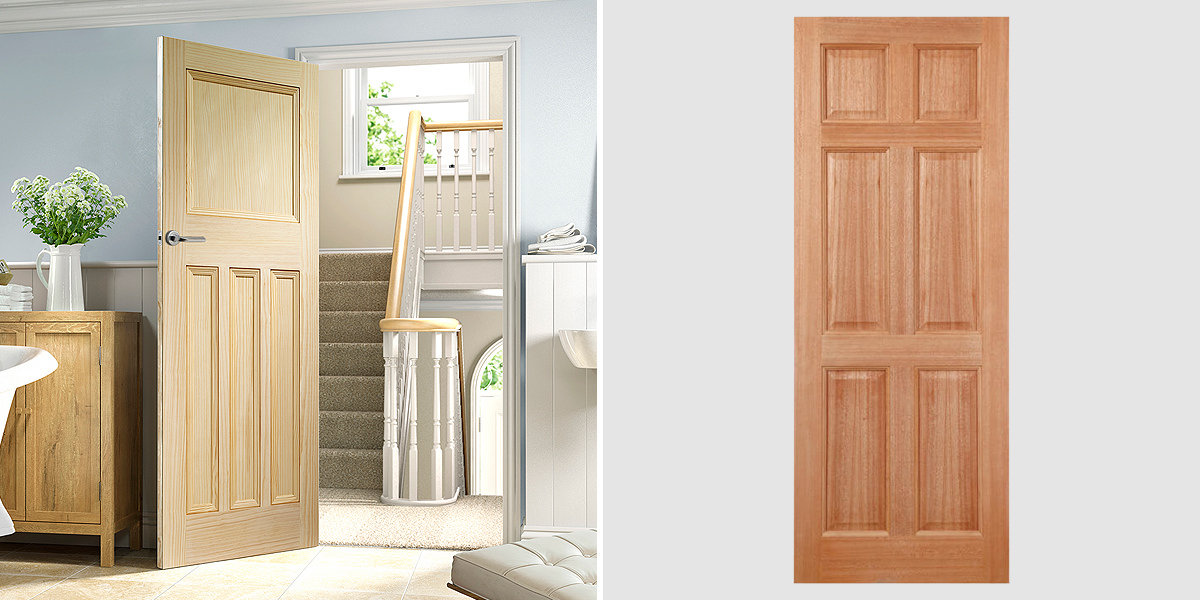
Classic pine doors tend to feature simple panelled designs. From two-panel to six-panel options, these styles have a timeless look that works in almost any home. Pine's light grain makes it easy to customise, whether you want to paint it white or stain it for a natural finish.
Hardwood doors bring more weight and detail to classic styles. Raised panels, detailed moulding, and deep wood tones make them a perfect choice for traditional homes or formal spaces.
Modern Pine and Hardwood Door Innovations
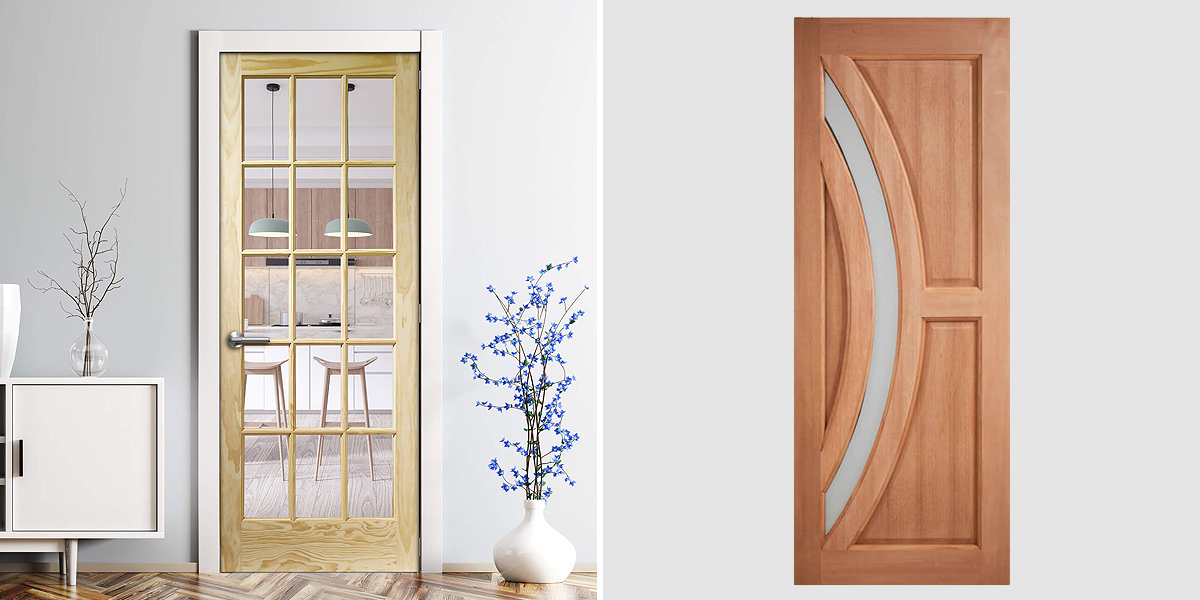
Modern pine doors often favour minimalist designs, with smooth finishes and clean lines. Options with glazed panels are becoming more common, allowing light to flow through rooms while maintaining privacy.
Hardwood doors have evolved as well, with slim profiles and engineered cores that improve insulation and energy efficiency. Frosted or decorative glazing adds modern style while maintaining the durability and elegance that hardwood is known for.
Pine and Hardwood Door Buying Guide
Key Factors to Consider
Think about where you'll be using the door and what kind of wear it might face.
Pine doors work best in internal spaces where durability isn't a big concern. They're affordable and versatile, perfect for bedrooms, bathrooms, and studies.
Hardwood doors, in contrast, are built to last. If you need something for a front entrance, hallway, or busy family area, hardwood's resilience makes it a smart investment. While they're pricier upfront, hardwood doors pay off in durability and insulation.
Cost Comparison by Material and Style
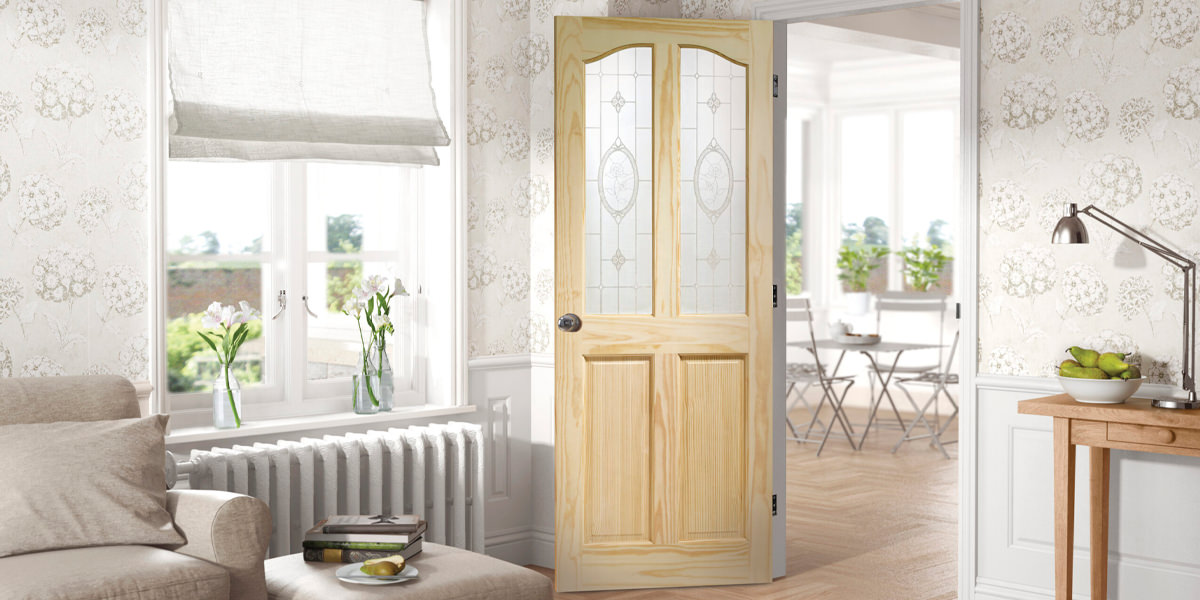
Pine doors are generally the most budget-friendly option. They're widely available and easy to customise, which keeps costs down. Unfinished or primed pine doors are even more affordable if you're willing to paint or stain them yourself.
Hardwood doors come at a higher price due to their premium materials and durability. External hardwood doors with added features like fire ratings or glazing are more expensive but deliver unmatched performance and lasting value.
Maintenance Tips for Pine and Hardwood Doors
Cleaning and Care
Pine doors need regular cleaning with a soft cloth and gentle soap to keep them looking their best. If unfinished, sealing or painting is necessary to prevent moisture damage.
Hardwood doors are easier to maintain, and an occasional polishing will help them retain their shine and natural grain.
Handling Wear and Tear
Pine doors can pick up scratches or dents more easily, but these are often quick to fix with sanding and repainting.
Hardwood doors are tougher and more resistant to wear, needing only occasional adjustments to hinges or locks to keep them functioning smoothly.
Energy Efficiency and Sustainability
Hardwood doors provide excellent insulation, reducing draughts and helping to maintain consistent indoor temperatures.
Pine doors, while lighter, are often sourced from sustainable forests, making them an eco-friendly option for various applications.
Conclusion: Finding the Pine and Hardwood Doors
Choosing between pine and hardwood doors comes down to your needs, budget, and where the door will be used. Pine doors are affordable, lightweight, and perfect for internal spaces, while hardwood doors offer durability and timeless style, making them ideal for entrances and high-traffic areas.
In this guide, we've highlighted the key differences to help you make an informed choice in bringing value, beauty, and function to any home or office.
Related Articles
Category
Study & ResearchPosted On
30th October 2023